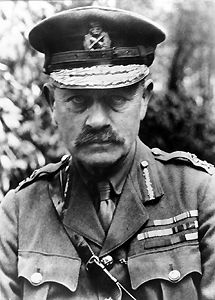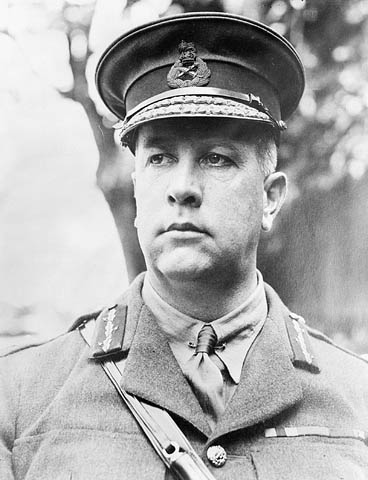One hundred years ago, Canadians made their most memorable contributions in the First World War . The young men of the Canadian Corps fought three famous battles that year — assaulting prized enemy positions, capturing each one, and forging a reputation as formidable shock troops . The human toll was horrific, but the bloody sacrifices of 1917 laid the foundation for a new Canadian nationalism and ultimately, independence from Britain.
Vimy

By 1917, the 100,000 men of the Canadian Corps were the largest army the country had ever assembled. They were ordered to capture Vimy Ridge, a fortified, seven-kilometre-long hill in northeastern France, as part of a wider British offensive against German lines that spring.
The Canadians assaulted the ridge on 9 April, Easter Monday. In wind, sleet and snow, waves of infantry, helped by massive artillery barrages, stormed the ridge. After four days of intense fighting, most of the ridge was in Allied hands.
The fighting left 3,598 Canadians dead, and another 7,000 wounded. There were an estimated 20,000 casualties on the German side.
The victory, one of the Allies' first major successes of the war, was greeted with awe and enthusiasm in Canada, and the battle quickly became a symbol of an awakening nationalism. One of the main reasons is that the four divisions of the Corps – soldiers from every region of Canada, fighting for the first time as a single shock force – had taken the ridge together.
"Wounded men (were) sprawled everywhere in the slime, in the shell holes, in the mine craters, some screaming to the skies, some lying silently, some begging for help, some struggling to keep from drowning in craters, the field swarming with stretcher-bearers trying to keep up with the casualties" — battle diary of the 6th Brigade (the Iron Sixth), 2nd Division, Canadian Corps
Byng and Currie
Lieutenant-General Julian Byng, the British commander of the Canadian Corps, directed the attack on Vimy Ridge. While the Corps' ranks were largely volunteer Canadians, many of its senior staff officers were British career soldiers.
British army organization, leadership, artillery, supply and engineering support were crucial in the Canadian success at Vimy – a fact not well known to history.
After the war, from 1921-1926, Julian Byng served as governor general in Canada, becoming famous for the King-Byng affair – his conflict with Prime Minister William Lyon Mackenzie King.
After the victory at Vimy, Julian Byng was promoted to higher command in the British army. Lieutenant-General Arthur Currie, one of the heroes of Vimy, took over the Canadian Corps – the first Canadian to hold the post (see: Canadian Command in the Great War).
Currie was a former teacher, insurance salesman and volunteer militiaman in British Columbia. Despite having no professional military experience, he became one of the ablest Allied generals of the war. A skilled and innovative battlefield tactician, he would lead the Canadian Corps to a series of hard-won victories through the remainder of 1917 and 1918, contributing to the defeat of Germany and the end of the war.
Hill 70

In July, Currie was ordered to attack Lens, a coal-mining city in France under German occupation. The British hoped the attack would divert German military resources away from the larger Passchendaele offensive then raging in Belgium.
Currie believed Hill 70, a strategic high point just beyond Lens, was more important than the city itself – since capturing the city would be futile if the Germans could shoot down from the surrounding hills. Currie convinced his superiors to make Hill 70 the main objective.
The Canadians assaulted Hill 70 on 15 August. Slowly, they captured German machine-gun posts and advanced up the hill. Waves of German counterattacks were rebuffed. The Canadians eventually captured the high ground, but the fighting continued for three days, with the Canadian Corps turning back 21 German counterattacks.
About 9,000 Canadians were killed or wounded in the effort, while an estimated 25,000 Germans were killed or wounded.
“It was altogether the hardest battle in which the Corps has participated,” wrote Currie. GHQ [General Headquarters] regard it as one of the finest performances of the war.”
Passchendaele

Meanwhile, British forces had mounted a massive offensive against German lines in Belgium, hoping to seize the village of Passchendaele, atop a strategic ridge, and push from there to the North Sea coast, capturing ports held in German hands.
Previous fighting, and renewed bombardment, had turned the Passchendaele battlefield into an apocalyptic, pulverized mire, dotted with water-filled craters deep enough to drown a man. Months of assaults by British, Australian and New Zealand troops had failed, resulting in nearly 70,000 Allied casualties. The Canadians were then ordered to take up the fight.
Arthur Currie objected to what he considered a reckless attack. After lodging his protest, he made careful plans for the Canadians' assault. For two weeks, the Canadian Corps assaulted Passchendaele ridge — gaining only a few hundred metres each day, despite heavy losses. Conditions were appalling. Troops huddled in waterlogged shell holes, or became lost on the blasted mud-scape, not knowing where the front line was that separated Canadian from German positions.
On 6 November, the Canadians succeeded in capturing the ridge and the ruins of Passchendaele village. More than 15,600 Canadians were killed or wounded in the battle — among the 275,000 casualties lost overall to the Allies at Passchendaele. The Germans suffered another 220,000 killed and wounded.
At the end, the point of it all was unclear. A few months later all the ground gained by the Allies was evacuated in the face of a looming German assault.
Loss
1917 should be remembered, first, for its horrors. The great loss of life and the trauma endured by the soldiers on all sides make little sense, given that the gains made in the three battles were either lost to German forces the following year (at Passchendaele), or made little impact on the direction of the war (Vimy).
However, the battles of 1917 gave the Canadian Corps the confidence that it could fight effectively and win. The fighting wore down the German army – and although it would rise again to mount an offensive in 1918, it was short-lived. The war would be over by November that year, thanks in part to the Canadians spearheading the Hundred Days Campaign that brought the First World War and its slaughter to an end (see : Battle of Amiens; Battle of Cambrai).
Legacy

The epic campaigns of 1917 also planted the seeds of an idea that Canada deserved to stand on its own on the world stage, apart from the British.
Vimy, Hill 70 and Passchendaele – along with Canada's collective sacrifices in the war – inspired Canadian leaders, including Prime Minister Robert Borden and his successors, to seek greater autonomy within the British Empire. Their efforts would lead to Canada's full independence as a sovereign state in the decades that followed (see: Treaty of Versailles; Balfour Report).

 Share on Facebook
Share on Facebook Share on X
Share on X Share by Email
Share by Email Share on Google Classroom
Share on Google Classroom













